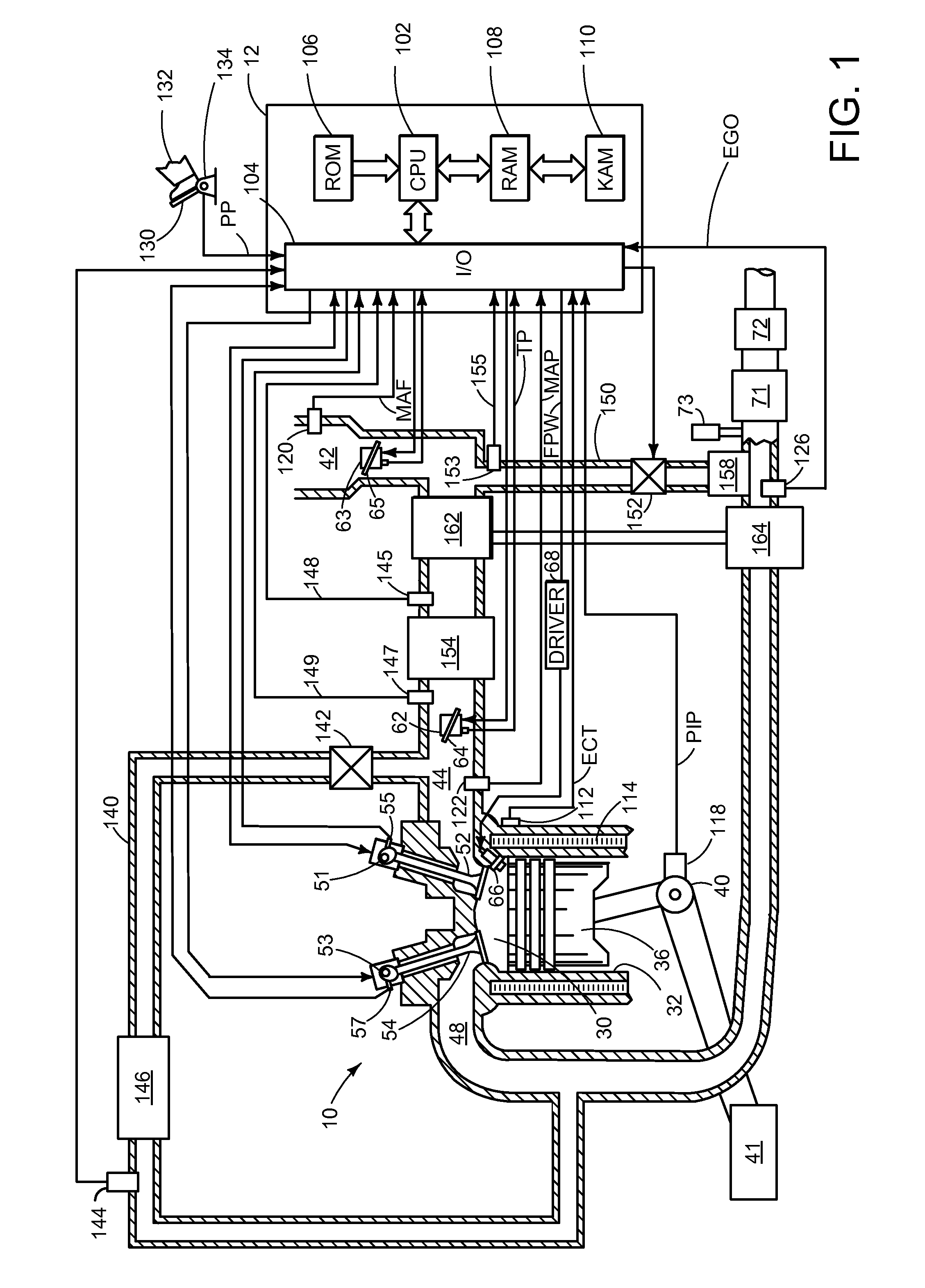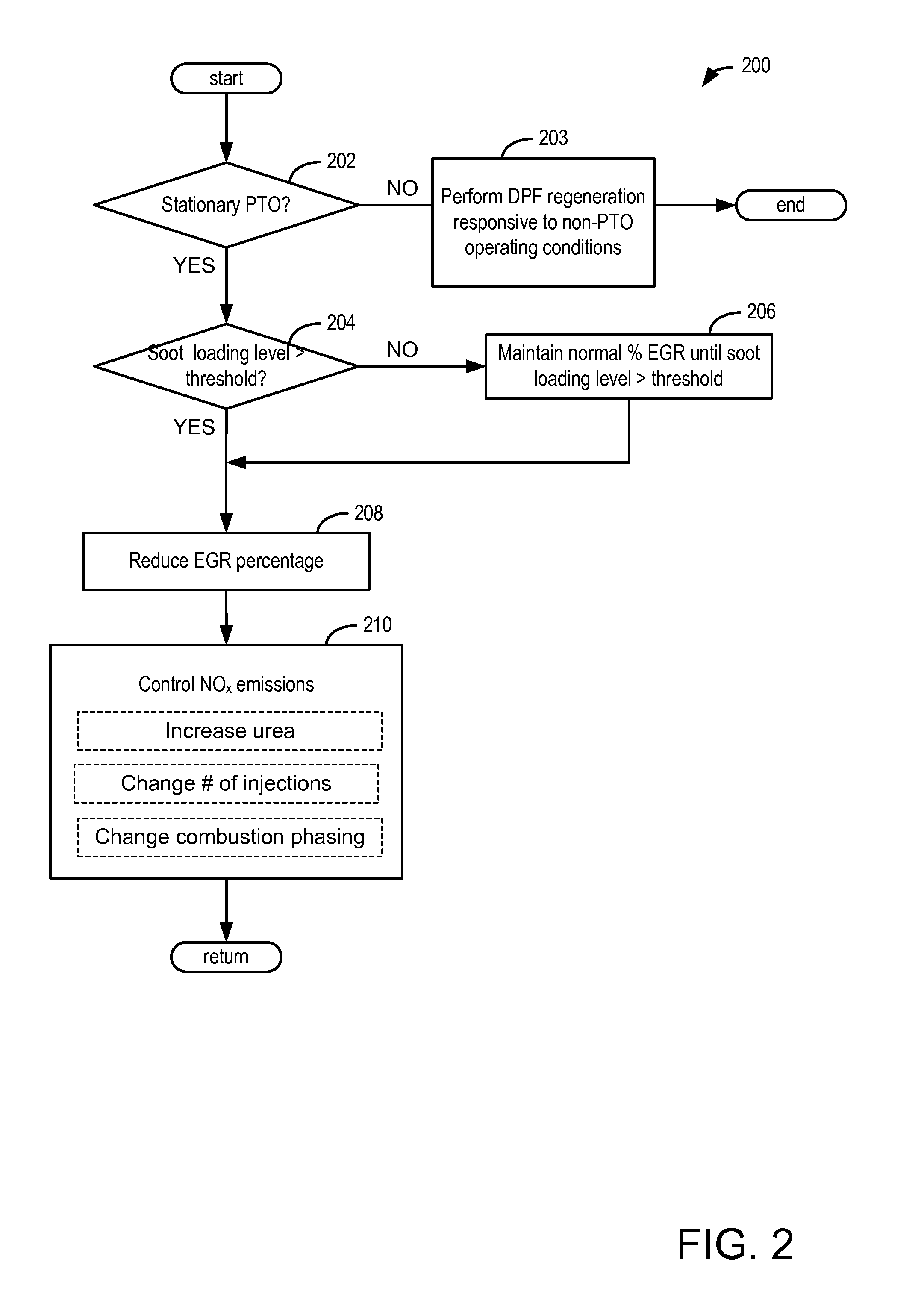Diesel particulate filter passive regeneration during stationary power take-off
a technology of diesel particulate filter and stationary power take-off, which is applied in the direction of electrical control, machines/engines, mechanical equipment, etc., can solve the problems of affecting the formation of no/sub>2/sub>, and achieve the effect of reducing the amount of soot emissions and reducing the amount of trapped particulate matter
- Summary
- Abstract
- Description
- Claims
- Application Information
AI Technical Summary
Benefits of technology
Problems solved by technology
Method used
Image
Examples
Embodiment Construction
[0014]Soot loading may continue to accumulate during stationary PTO. Below systems and methods are described to regenerate a DPF during stationary PTO. PTO may not be discontinued, and the vehicle may remain stationary through the course of regeneration using the system and method of the present disclosure. The object of the present disclosure is described below with greater detail in reference to the FIGS.
[0015]Referring now to FIG. 1, a schematic diagram of one cylinder of multi-cylinder engine 10, which may be included in a propulsion system of an automobile, is shown. Engine 10 may be controlled at least partially by a control system including controller 12 and by input from a vehicle operator 132 via an input device 130. In this example, input device 130 includes an accelerator pedal and a pedal position sensor 134 for generating a proportional pedal position signal PP. Combustion chamber (i.e., cylinder) 30 of engine 10 may include combustion chamber walls 32 with piston 36 po...
PUM
 Login to View More
Login to View More Abstract
Description
Claims
Application Information
 Login to View More
Login to View More - R&D
- Intellectual Property
- Life Sciences
- Materials
- Tech Scout
- Unparalleled Data Quality
- Higher Quality Content
- 60% Fewer Hallucinations
Browse by: Latest US Patents, China's latest patents, Technical Efficacy Thesaurus, Application Domain, Technology Topic, Popular Technical Reports.
© 2025 PatSnap. All rights reserved.Legal|Privacy policy|Modern Slavery Act Transparency Statement|Sitemap|About US| Contact US: help@patsnap.com



